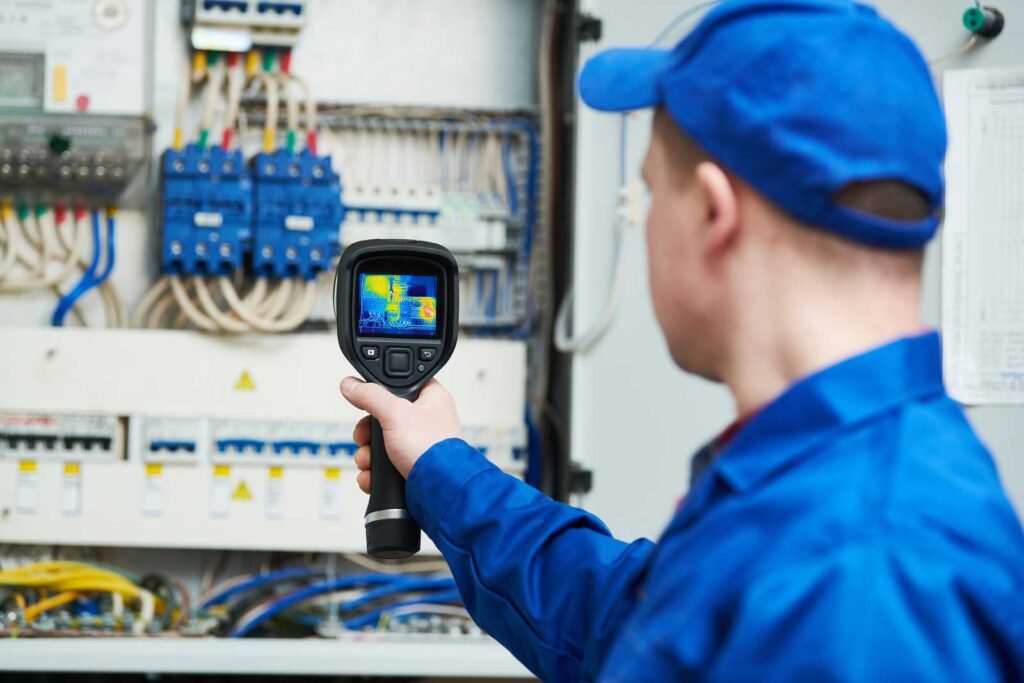
In today’s competitive industrial landscape, downtime isn’t just inconvenient, it’s expensive.
That’s why more facilities across Canada are turning to predictive maintenance strategies to avoid unexpected failures, reduce repair costs, and safeguard their operations.
One of the most effective and underutilized tools in this arsenal is infrared (IR) thermography.
Thermal scans help identify problems like loose connections, overloaded circuits, bearing failure, and insulation degradation before they result in costly damage or safety risks.
Inspections can be conducted while equipment is live and operational, meaning no disruption to your production or facility schedule.
By spotting electrical hotspots before they spark, infrared inspections significantly reduce fire risk, especially in aging facilities.
Identifying issues early prevents major breakdowns, saving money on repairs, parts, and emergency service calls. It also helps extend the life of your equipment.
IR thermography inspections provide documentation that can support regulatory compliance (e.g., CSA Z463, NFPA 70B guidelines) and often help reduce insurance premiums or satisfy insurer risk assessments.
At its core, predictive maintenance with infrared thermography is about working smarter, not harder. It empowers maintenance teams to make informed decisions based on real data, rather than guesswork or reactive problem-solving.
By investing in thermal imaging as part of a regular PdM program, businesses not only reduce downtime and protect assets, they build a culture of proactive safety and operational excellence.
Infrared thermography is no longer a luxury, it’s a critical part of modern risk management and maintenance planning. As fire risks increase with aging infrastructure, and insurance providers raise the bar on compliance, now is the time to get ahead.
Whether you’re overseeing a manufacturing plant, a commercial building, or a distribution center, integrating IR thermography into your predictive maintenance strategy is one of the smartest moves you can make.
Stay safe. Stay efficient. Stay ahead.<!
Would you like help designing a custom predictive maintenance program using IR thermography? Contact us for a free assessment and discover how we can support your facility’s long-term performance and safety goals.